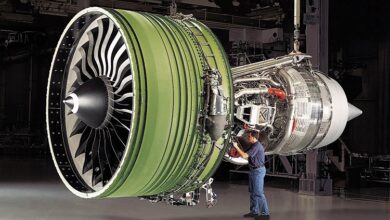The automotive industry is experiencing a paradigm shift driven by rapid technological advancements, increased connectivity, and the advent of autonomous driving. The integration of Information Technology (IT) solutions in vehicles has become indispensable, offering enhanced safety, efficiency, and user experience. However, navigating the landscape of automotive IT solutions involves a delicate balance between cost and features. This comprehensive guide aims to elucidate the considerations and strategies for achieving this balance, with a focus on emerging technologies like 5G automotive connectivity.
Understanding Automotive IT Solutions
What are Automotive IT Solutions?
Automotive IT solutions encompass a broad spectrum of technologies designed to optimize the performance, safety, and convenience of vehicles. These solutions include but are not limited to telematics, infotainment systems, advanced driver-assistance systems (ADAS), vehicle-to-everything (V2X) communication, cybersecurity measures, and data analytics.
Importance of Automotive IT Solutions
The integration of IT solutions in vehicles is essential for several reasons:
- Safety: Enhanced safety features such as collision avoidance, lane departure warnings, and automatic emergency braking rely heavily on IT solutions.
- Efficiency: IT solutions help in optimizing fuel consumption, reducing emissions, and improving overall vehicle performance.
- User Experience: Infotainment systems, navigation aids, and connectivity features significantly enhance the driving experience.
- Autonomous Driving: The development of self-driving cars is heavily dependent on sophisticated IT solutions for sensor data processing, real-time decision making, and environmental interaction.
Key Considerations in Balancing Cost and Features
Cost Factors
- Development and Integration Costs: Developing and integrating advanced IT solutions can be expensive. This includes software development, hardware costs, and the integration of these components into the vehicle.
- Maintenance and Upgrades: Ongoing maintenance and the ability to upgrade systems are crucial. These costs can accumulate over the vehicle’s lifespan.
- Regulatory Compliance: Meeting regulatory standards and obtaining necessary certifications can add to the costs.
- Market Demand and Competition: The competitive landscape and consumer expectations can drive the need for more advanced and costly features.
Feature Considerations
- Safety and Compliance Features: Essential features that ensure the vehicle meets safety regulations and standards.
- Performance Enhancements: Features that improve vehicle performance, such as fuel efficiency and engine optimization.
- Connectivity and Infotainment: Modern consumers expect high levels of connectivity, including seamless integration with smartphones and access to digital services.
- Autonomous Capabilities: As the industry moves towards autonomous driving, incorporating necessary sensors and processing power becomes important.
- User-Centric Features: Enhancements that improve comfort and convenience for the driver and passengers, such as advanced climate control and personalized settings.
Emerging Trends in Automotive IT Solutions
5G Automotive Connectivity
The deployment of 5G technology is set to revolutionize automotive IT solutions. 5G offers several advantages over previous generations of wireless communication, including:
- Higher Bandwidth: Supports faster data transmission, essential for real-time applications such as video streaming and real-time traffic updates.
- Low Latency: Critical for applications requiring immediate feedback, such as autonomous driving and V2X communication.
- Enhanced Connectivity: Allows for better connectivity in densely populated areas and improved communication between vehicles and infrastructure.
Impact of 5G on Automotive IT Solutions
- Enhanced V2X Communication: 5G enables robust vehicle-to-everything communication, enhancing traffic management, reducing congestion, and improving road safety.
- Improved Autonomous Driving: The low latency and high reliability of 5G support the real-time processing needs of autonomous vehicles.
- Advanced Infotainment Systems: 5G facilitates high-definition content streaming and advanced infotainment features, offering a superior user experience.
- Remote Software Updates: Faster and more reliable over-the-air updates for vehicle software and firmware, reducing the need for physical maintenance.
Artificial Intelligence and Machine Learning
AI and ML are becoming integral components of automotive IT solutions. Their applications include:
- Predictive Maintenance: AI algorithms analyze data from various vehicle sensors to predict and prevent potential failures.
- Driver Assistance Systems: AI enhances ADAS by improving object detection, lane-keeping, and adaptive cruise control.
- Personalization: Machine learning models personalize the driving experience by adapting to the driver’s preferences and habits.
Cybersecurity
As vehicles become more connected, the importance of cybersecurity cannot be overstated. Key areas include:
- Data Protection: Ensuring the privacy and security of data transmitted between the vehicle and external servers.
- System Integrity: Protecting the vehicle’s IT systems from unauthorized access and potential cyber attacks.
- Compliance: Adhering to regulatory requirements for cybersecurity in the automotive sector.
Strategies for Balancing Cost and Features
Prioritizing Essential Features
To manage costs effectively, prioritize features that are essential for safety, regulatory compliance, and core performance. Non-essential features can be offered as optional add-ons, allowing consumers to choose based on their preferences and budget.
Modular Design
Adopting a modular design approach allows for greater flexibility in feature integration. By using standardized modules, manufacturers can easily upgrade or replace components without overhauling the entire system, reducing costs and complexity.
Leveraging Open-Source Solutions
Open-source software can significantly reduce development costs. By leveraging existing platforms and frameworks, manufacturers can focus on customization and innovation without incurring the high costs of developing proprietary solutions from scratch.
Partnering with Technology Providers
Collaborating with established technology providers can help mitigate costs and accelerate the development process. Partnerships can provide access to advanced technologies, expertise, and economies of scale.
Implementing Agile Development Practices
Agile development practices promote iterative progress, allowing for continuous testing and feedback. This approach helps in identifying and addressing issues early, reducing the risk of costly delays and ensuring that the final product meets the desired quality and functionality.
Focus on Scalability
Designing solutions with scalability in mind ensures that they can accommodate future advancements and increased demands without requiring significant redesigns. This long-term perspective can save costs related to upgrades and expansions.
Future Outlook
The future of automotive IT solutions is poised for significant advancements, driven by ongoing developments in 5G, AI, and IoT. Manufacturers must continue to innovate while balancing costs to meet the evolving demands of consumers and regulatory bodies.
Key Trends to Watch
- Integration of 5G and Edge Computing: The combination of 5G and edge computing will enable more efficient data processing and real-time decision-making, crucial for autonomous vehicles and advanced driver-assistance systems.
- Enhanced Personalization: AI-driven personalization will become more prevalent, offering tailored experiences based on driver behavior and preferences.
- Sustainable and Energy-Efficient Solutions: With a growing focus on sustainability, automotive IT solutions will increasingly prioritize energy efficiency and reduced environmental impact.
Challenges Ahead
- Cost Management: As technology advances, managing the costs associated with development, integration, and maintenance will remain a significant challenge.
- Cybersecurity: Ensuring robust cybersecurity measures in the face of increasingly sophisticated threats will be crucial.
- Regulatory Compliance: Keeping up with evolving regulatory requirements, particularly in areas like data privacy and autonomous driving, will be essential.
Conclusion
Balancing cost and features in automotive IT solutions is a complex yet critical task for manufacturers. By prioritizing essential features, adopting modular designs, leveraging open-source solutions, forming strategic partnerships, and focusing on scalability, companies can effectively manage costs while delivering innovative and high-quality products. As technologies like 5G and AI continue to evolve, the automotive industry must remain agile and forward-thinking to navigate the challenges and opportunities ahead.



